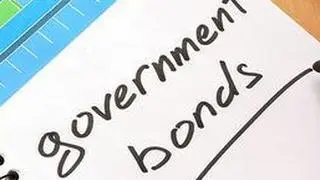The dollar traded above its recent lows against major rivals on Friday, having bounced after U.S. President Donald Trump said he wanted a "strong dollar", contradicting earlier comments made by Treasury Secretary Steven Mnuchin.
The dollar gained a boost on Thursday after Trump told CNBC in an interview in Davos, Switzerland, that he ultimately wants the dollar to be strong. That helped the greenback bounce broadly, pulling the euro away from three-year highs and knocking sterling away from its strongest levels seen since June 2016. Some market participants, however, were sceptical that Trump's comments would be enough to change the recent trend of dollar weakness. "The market forces, fundamentals all suggest that the dollar should weaken over the course of 2018," said Roy Teo, investment strategist for LGT Bank in Singapore.
Market participants say the dollar has faced headwinds because its relative yield attraction is seen at risk as the world's major central banks are seen winding up their stimulus. That would change the interest rate dynamics of the past few years, when the U.S. Federal Reserve was the only central bank raising rates.
The euro held steady at $1.2405. That was down from a high of $1.2538 that the euro had reached on Thursday after European Central Bank President Mario Draghi said economic data pointed to "solid and broad" growth with inflation likely to rise in the medium term. Draghi also warned that the surge in the euro was a source of uncertainty and said the ECB might have to review strategy if U.S. comments on the benefits of a weak dollar lead to a change in monetary conditions.
Sterling rose 0.2 percent to $1.4163, but remained well below its peak on Thursday of $1.4346, which was the pound's highest level since the Brexit vote in June 2016. Against the yen, the dollar rose 0.2 percent to 109.71 yen , having bounced from a four-month low of 108.50 yen struck on Thursday.








Comments
Comments have to be in English, and in full sentences. They cannot be abusive or personal. Please abide by our community guidelines for posting your comments.
We have migrated to a new commenting platform. If you are already a registered user of TheHindu Businessline and logged in, you may continue to engage with our articles. If you do not have an account please register and login to post comments. Users can access their older comments by logging into their accounts on Vuukle.